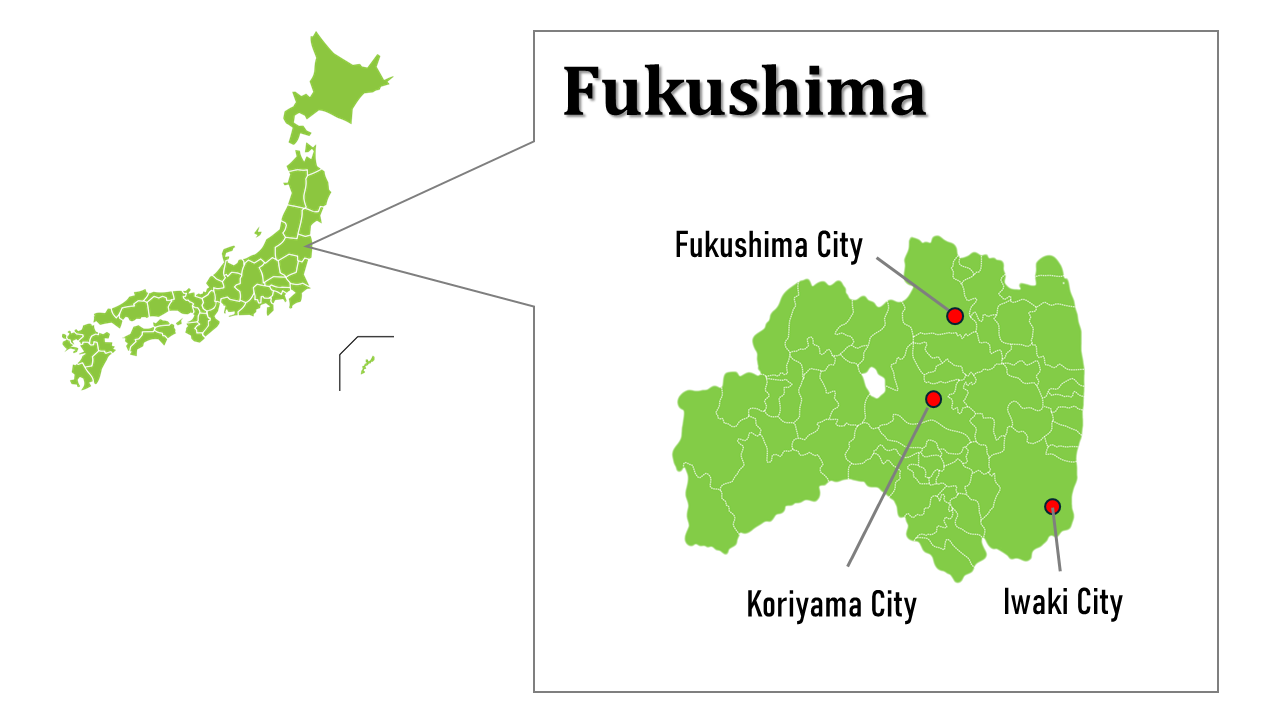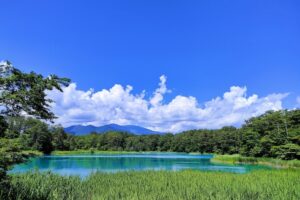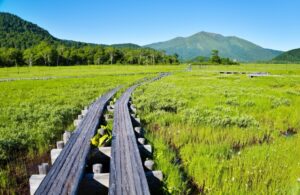Fukushima Prefecture | A Tapestry of Diverse Landscapes Woven by Three Regions

Fukushima Prefecture | A Tapestry of Diverse Landscapes Woven by Three Regions
Fukushima Prefecture, with its vast land area, is composed of three distinct regions—Hamadori, Nakadori, and Aizu—each fostering its own unique climate and culture.
Hamadori, facing the Pacific Ocean, enjoys a mild climate and thrives on fishing, making use of the sea’s bounty. In recent years, it has also gained attention as a hub for renewable energy initiatives.
Nakadori, located in the central part of the prefecture, serves as a key transportation corridor where urban functions and agriculture coexist.
Surrounded by mountains, the Aizu region is known for its heavy snowfall and has long nurtured a culture rooted in history and tradition. Landmarks such as Tsuruga Castle and streetscapes that retain the atmosphere of samurai culture continue to captivate visitors.
Fukushima is also renowned for its fruit production, especially peaches, apples, and pears, which are prized throughout Japan for their sweetness and juiciness.
Although the region suffered severe damage from the Great East Japan Earthquake and the nuclear accident in 2011, each area has been steadily recovering, forging ahead with resilience and embracing new challenges for the future.

Prefectural Capital
- Fukusima City
Major Cities
- Fukushima City
- Koriyama City
- Iwaki City
Population
- Approximately 1.8 million
Major Tourist Attractions and Events
- Goshikinuma Ponds (Five Colored Ponds)
- Aizu-Wakamatsu
- Mount Bandai
- Spa Resort Hawaiians

With hues of emerald green, cobalt blue, and turquoise, the Goshikinuma ponds display a breathtaking palette of colors—earning them the name “the mystical lakes.”

Tsuruga Castle, the proud symbol of Aizuwakamatsu, rises above the city—its elegant keep visible from nearly every corner of town.

Ōuchi-juku, a former post town that flourished during the Edo period, is lined with traditional thatched-roof houses along its old highway—offering a nostalgic glimpse into Japan’s past.

Oze, selected as one of the 100 Landscapes of Japan, is also a popular hiking destination.

The stunning scenery as seen from Lake Inawashiro
Articles about Fukushima


